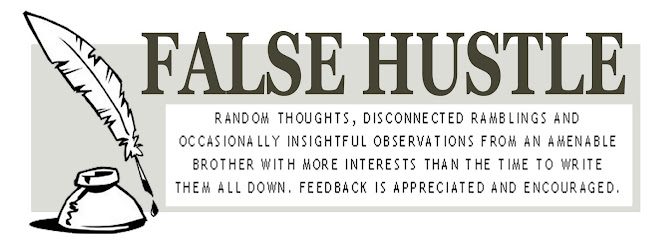
Now, maybe it seems odd to say that I was lucky. I played football in high school and not-so-much in college, leaving behind mostly a legacy of mediocrity. I never got even the faintest whiff of the dream of every kid who puts on the pads - the NFL. It took me about two practices at TCU in my sophomore year to figure out that LaDainian Tomlinson had a future in the game, and that I had a future writing about it.
So, what makes me lucky? Here, try some Malcolm Gladwell:
The HITS data suggest that, in an average football season, a lineman could get struck in the head a thousand times, which means that a ten-year N.F.L. veteran, when you bring in his college and high-school playing days, could well have been hit in the head eighteen thousand times: that’s thousands of jarring blows that shake the brain from front to back and side to side, stretching and weakening and tearing the connections among nerve cells, and making the brain increasingly vulnerable to long-term damage. People with C.T.E., Cantu says, “aren’t necessarily people with a high, recognized concussion history. But they are individuals who collided heads on every play—repetitively doing this, year after year, under levels that were tolerable for them to continue to play.”
But what I'm not tallying are all the other little collisions that might have bruised my brain in some way. I started playing the game when I was a mere child, in the streets and backyards of my neighborhood, and started playing organized tackle football when I was 10.
What do all those thuds and thumps over the years mean? Gladwell, again:
Yet the HITS data suggest that practice—the routine part of the sport—can be as dangerous as the games themselves. ... In one column, the HITS software listed the top hits of the practice up to that point, and every few moments the screen would refresh, reflecting the plays that had just been run on the field. Forty-five minutes into practice, the top eight head blows on the field measured 82 gs, 79 gs, 75 gs, 79 gs, 67 gs, 60 gs, 57 gs, and 53 gs. One player, a running back, had received both the 79 gs and the 60 gs, as well as another hit, measuring 27.9 gs. This wasn’t a full-contact practice. It was “shells.” The players wore only helmets and shoulder pads, and still there were mini car crashes happening all over the field.
But it's this yearning that makes me object to the premise of Gladwell's piece: that football and dogfighting are more or less the same. Gladwell points out that one of his interview subjects, former NFL lineman Kyle Turley, said "he loved playing football so much that he would do it all again." You'll find that most ex-players feel the same way. Nothing feels quite like playing under those lights, on that gridiron.
I don't pretend to know much about dogs or dogfighting but, to me, the major difference is the element of choice. I - and thousands of others - willingly submitted ourselves to the brutal theater that is football. But dogs, on the other hand, are maniacally conditioned by their owners to "please (their) master," said Carl Semencic in “The World of Fighting Dogs”. This is coercion, this is abuse, this is sick.
Honestly, I can't have a serious debate about whether football and dogfighting share any traits other than violence. But Gladwell's piece is compelling in that we see how players can drive themselves to ruin in much the same way as a "game" canine. The toll seems to be tremendous, man or beast.
Beyond that, I'm much more interested in how dogfighting is juxtaposed against a culture of sport hunting or some of the uglier practices of our industrial food complex. Michael Vick is condemned; Sarah Palin is celebrated. But why?
Because in the end, football can be brutal. But at least everyone knows they're getting played.
.jpg)
